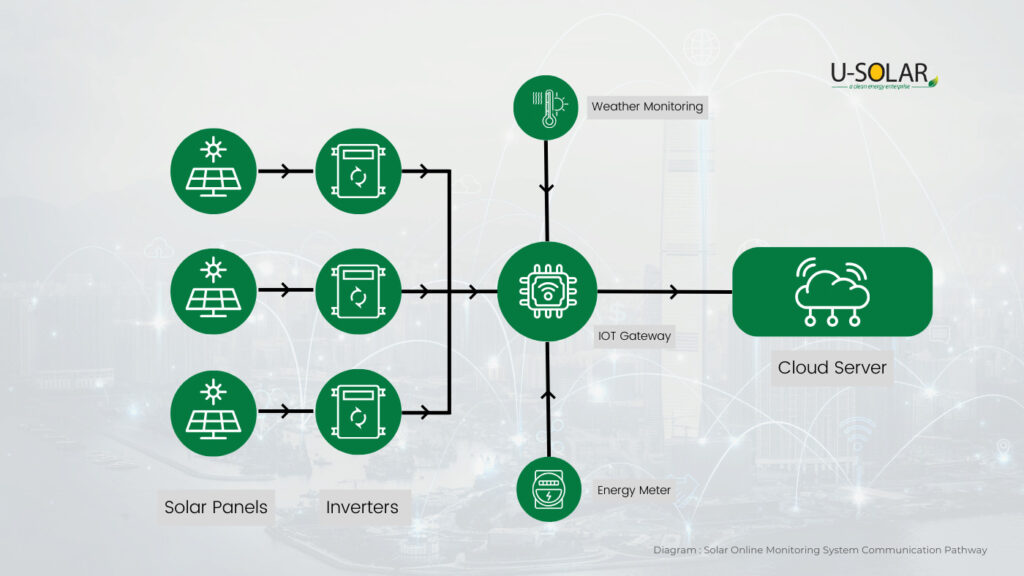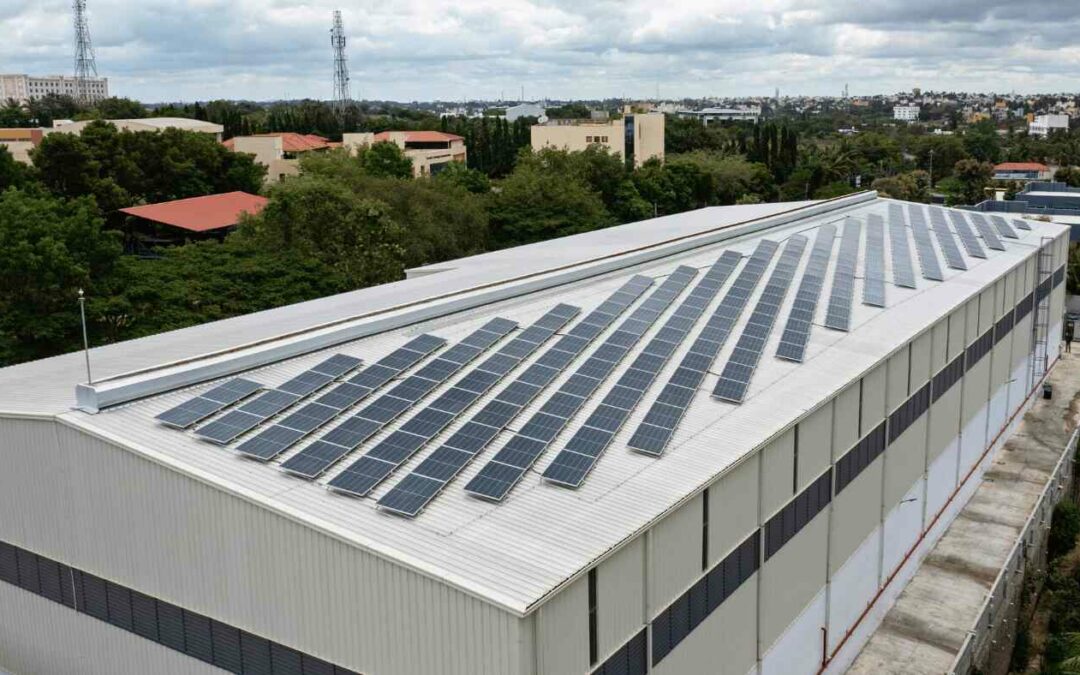Introduction
An online monitoring system for solar installations is crucial in many ways. First of all, it enhances performance by constantly collecting data on solar panels, inverters, and other components or modules. This enables rapid maintenance and improves performance. Secondly, it detects faults in real-time, such as electrical breakdowns, which reduces downtime and revenue loss. Thirdly, it facilitates data analysis quicker to recognize trends, forecast performance, and make informed decisions concerning improvements.
It also enables different characteristics like remote management, fault detection, data collection, security, in addition to efficient energy storage integration and remote troubleshooting. These innovations, in essence, serve as essential for enhancing solar project performance, efficiency, and profitability through real-time data and insights.
Features of Online Monitoring System
Data Acquisition
Solar inverters include built-in communication modules that capture valuable information concerning the solar power system’s operations. These modules act as the sensors that are constantly collecting and saving data including power output, voltage, current, energy generation, and system status.

Now, how does this data proceed to a central monitoring system? There are numerous ways of communicating channels used here. It’s equivalent to connecting devices to the internet using Wi-Fi or Ethernet cables to transmit data collected to the central monitoring system. They can interact across cloud servers to store the data and the end user can get all the information in the panel.
Data Visualization and Analysis
Effective data visualization and analysis are pivotal for the success of solar installation projects. Visualization tools like Tableau, Power BI, or custom dashboards can provide real-time insights into energy production, system efficiency, and potential issues. By visualizing data on factors such as solar irradiance, temperature, and power output, project managers can identify trends, anomalies, and areas for improvement.
This information enables timely decision-making, from optimizing panel placement and cleaning schedules to predicting maintenance needs. Furthermore, historical data analysis helps in long-term performance assessment, ensuring that solar installations continue to deliver cost-effective and sustainable energy solutions.
Predictive Analysis
It is a Data analysis procedure to predict future outcomes which are predicted with the help of predictive analysis techniques based on historical data. It utilizes a variety of statistical techniques such as automated machine learning algorithms to create mathematical predictive models that extract information from datasets and provide predictive scores for an array of organizational outcomes.
Why Solar Installers should use Online monitoring
There is a huge potential for solar project installers to maintain the safety of the solar installation system. The safer the system the life cycle of the project would be maintained. One of the approaches to maintain safety is by using the online monitoring system for which the system can predict any future failure, which in turn makes some room for precautions preparations.
Avoid Inverter Failures by Inverter Health Monitoring
Detecting the malfunctions in the inverter modules allows for early diagnosis and quicker repairs or replacements which will minimize the downtime.
Get Detailed Diagnostics
Detailed diagnostic information can be shared across departments, allowing maintenance teams to identify specific issues without physically inspecting the system. This can save time and resources.
Prior cleaning alerts without manual inspection
Some monitoring systems can analyze weather conditions and predict when solar panels may need cleaning. Alerts can be sent to maintenance teams, ensuring that panels are cleaned regularly to maintain efficiency.
Predictive Maintenance
Advanced monitoring systems use predictive algorithms to anticipate equipment failures based on data patterns. This allows for proactive maintenance to prevent issues before they impact performance.
Performance Data Analysis
Online monitoring systems collect historical performance data. By analyzing this data, maintenance teams can identify patterns and trends that may indicate the need for maintenance or upgrades.
Security Alerts
Whenever there is an attempt at unusual activity or tampering with the solar modules, the monitoring system will notify us immediately which helps in preventing vandalism.
Reporting and Documentation
The Documentation process is streamlined with the help of a performance report which the online monitoring system generates based on the system performance data and future predictions. This helps in claiming the warranty or compliances in future, for the solar installers.
Remote Troubleshooting
Whenever there is an issue with the system, the online monitoring system helps in facilitating remote troubleshooting. This ensures that the system is diagnosed without needing to visit the site.
User-Friendly Interface
The system has next-generation user interface which is human-centric and shares a clear analysis of the system’s performance at the fingertips. This helps the industry and decision – makers to be proactive about maintenance and performance optimization.
U-Solar Collaboration with Johnson Controls India.
U-Solar offers comprehensive services, including ESCO services, energy assessments, engineering, infrastructure efficiency improvements, and clean energy investments, enabling tailored strategies. As a key player in solar installation projects, U-Solar excels in services for the C & I segment and their engineering expertise complements Johnson Controls sustainability innovation with the OpenBlue platform, digitizing energy management and optimizing via AI and machine learning. This empowers clients to monitor and analyze progress toward net-zero goals.
Read More about the collaboration at: https://usolar.in/usolar-jci-collaboration-to-foster-net-zero-targets/
Conclusion
A Solar Online monitoring system is an important feature for optimizing the performance, efficiency, and profitability of solar installations. The system has numerous capabilities including, continuous data acquisition, visualization and analysis, predictive maintenance, safety enhancement, inverter health monitoring, detailed diagnostics, cleaning alerts, security alerts, and user-friendly interfaces, which transform solar energy projects into reliable and sustainable solutions.
This System hence serves as effective management and optimization of the solar power system, it empowers solar energy adopters to leverage the full potential and contribute to a greener and sustainable future.
Avail Free Consultation Session Now
